Part 1
Even though few therapists would agree, sometimes neglect paths to the best possible outcome. Such is the case with the Adirondacks, whose fierce geography, unproductive soil, and hard weather diverted early American settlers to more benign plots. As a result, a state of raw wilderness maintained into the 19th century.
Some credit the turning point to William H. H. Murray’s book, Adventures in the Wilderness, extolling the freshness and purity of the Adirondacks. Before then, most regarded the Adirondacks with disdain. In 1791 William Gilpin noted that “the generality of people” found wilderness dislikable. “There are few,” he wrote,” “who do not prefer the busy scenes of cultivation to the greatest of nature’s rough productions.” Mountains and deep woods were things to avoid, or, if one were a merchant, soldier, or pilgrim, to go around. Mountains, as a whole, were anathema.
So, how did this mindset change? Some of the shift, perhaps, had to do with the palpable deterioration of the cities of the day, especially smoggy, coal-blackened New York City, with its rising fatigue and social atomization. The success of the agricultural revolution, with its techniques of crop rotation and protective enclosures, created a steep upwards curve in food production, and in turn, population. As more people flocked from the fields to the economic opportunities that cities promised, sewage got worse, crime increased, urban blight spread, and faith in a higher power that looked after those in need faded. By the middle of the 19th century, more people lived in cities than in the countryside, and more were employed in industry than in agriculture. From this dynamic, tuberculosis spread in the perfect storm of population density, the damp winter climate, and the concentration of smoke from factories and homes.
In the wake of this corrosive wave there evolved the romantic notion of the virtues of the simple, clean, and healthy life in Nature. It was, however, the industrial revolution that led to vastly improved means of transport, and to a class with disposable income. Those developments allowed and inspired travel to the Adirondacks, where the high mountains and its clean water and air set the minds wandering, and perhaps got rid of that nasty cough.
It was about this time Ralph Waldo Emerson and Teddy Roosevelt discovered the wild resources and reserves of the Adirondacks. Emerson wrote poetic tributes that influenced a generation to see Nature as something to explore and embrace. Roosevelt, as governor of New York, baked into the Constitution protection with a big concept he called “Forever Wild.”
The result of that gazetting is the 6-million-acre Adirondack Park, the largest park in the continental United States, larger than the state of Vermont, bigger than Yellowstone, Grand Canyon, Yosemite, Glacier, and the Great Smoky Mountains parks combined.
And within the blue line that defines this considerable area is an elaborate medley of men, their works and nature. It strives for an exceptional balance, as it contains nearly every kind of land classification: wilderness, wild forest, primitive area, land owned by investment groups and private clubs, industrial land, land held in trust by environmental organizations, private land under state easement, and private land without easement, not to mention 103 municipalities within the park, including the enfolding mountain town of Lake Placid, the only place in the U.S. to have hosted the winter Olympic Games twice.
I trundle into town beneath a white flurry, watching the falling flakes reflected in the lake. Despite the tag, the placid body of water next to town is not Lake Placid — it’s Mirror Lake. The namesake is down the road, a bit off the beaten track.
I check into the Mirror Lake Inn, a vertex of rustic luxury, which Condé Nast Traveler readers just ranked as #1 in the Northeast. It’s owned by Ed and Lisa Weibrecht, whose son Andrew is Olympic medalist with the U.S. Ski Team.
The Inn is designed in the Arts & Crafts style of the mountain lodges in the Adirondacks (rough-cut wood and unpolished stone), with wood-burning fireplaces in every room, and spectacular lake views from almost every vantage. But what makes it extraordinary is the bottomless plate of freshly home-baked chocolate-chip cookies that sit on the Reception table.
Lake Placid is a small town in a big place, to which every point of interest is walkable. I first make my way to the Winter Olympic Museum, the only one of its kind in the U.S., tucked next to the rink where Eric Heiden won five individual gold medals, and set four Olympic records and one world record at the 1980 Winter Olympic Games. The museum is bursting with commemorative posters, torches that look like medieval bludgeons, medals and memorabilia from both the 1932 and 1980 Games. There are video monitors replaying the “Miracle on Ice,” the moment when the US hockey team, made up of amateur and collegiate players, defeated the Soviets, who had won nearly every world championship and Olympic tournament since 1954. This, of course, was during the height of the Cold War, just weeks after the Soviets had invaded Afghanistan, and so the victory was symbolic, at least to those in the West, of some kind of triumph of the greater good. Jim Rogers, a member of the 1980 Lake Placid Olympic Organizing Committee and continuing champion for the region, tells me he thinks the fall of Communism in the Soviet Union traces to the Miracle on Ice. His theory….the Soviet athletes were fed unremitting propaganda about their infallibility, and when the West bested them, a belief in regards the whole system cracked a bit, and like a fissure in warming ice, widened and spread
Moving further down the lake, along the two-lane Main Street, past a profusion of intersecting circle logos, I turn up come to the Lake Placid Pub & Brewery, and stop in for a lusty ale.
Christopher Ericson, the owner, sidles over and recommends his signature microbrew, Ubu, and tells me a bit of his story.
Chris found his passion early on with a homebrew kit, and almost at once knew he wanted to ferment. In 1996 he and a buddy bought a small pub in Lake Placid. They installed some barrels and started brewing, first in the area. One of their concoctions was Ubu, named for a patron’s chocolate lab, and it became a local legend. He sips, and shares his favorite story about the success his local brew.
“In 2000, the Pub was a stop for some White House interns accompanying Hillary Clinton on a trip through the area. They loved my Ubu Ale, and decided to bring some to President Clinton as a gift. After he tried the brew, the President called in and ordered three cases of Ubu growlers for a party at the White House.”
“Ale to the chief,” I raise a glass in toast.
I stroll back to the hotel the long way, completing the 2.7 mile loop around the white-rimmed lake, working up an appetite. I take dinner at The View, the only Four Diamond restaurant in Lake Placid, and a leader in the farm-to-table movement, working closely with local and regional meat producers and processors, along with local cheese and vegetable producers to, to offer up organic ingredients as fresh as a stone’s throw. It also hosts an 8,000-bottle wine cellar, with many of the selections produced nearby. George Bernard Shaw said, “There is no sincerer love than the love of food,” and this is a place to fall in love.
With the window open a crack, the morning air infuses vigor and elasticity into every nerve and muscle. My skin is cool, and my frame tingles with anticipation of the adventures ahead. I head over to Whiteface Mountain, which boasts the highest vertical drop in the East, a cool 3,166 feet. In the pure morning light of the mid-morning I sluice down long faces that hosted crushes of Olympic athletes, and can’t help but hear the roar of the crowds as I carve a turn in front of the imagined 1980 booth of Jim McKay’s.
Then, for the afternoon I head over to The Mt. Van Hoevenberg Olympic Bobsled Run. The track is a twisting chute of steel, concrete and ice, down which you can luge and bobsled at rocket speeds. This is the place, as the philosopher William James wrote more than a century ago, to “aspire downwards.”
I go for the luge first, lying on my back, gloves clenched on the sides, feet tight against the front tillers. And as I charge down the run, feeling at the edge of capsizing on the sharp curves, feeling the torque and rattle in my bones, my heart feathering through my breast, it occurs to me that this is a modern example of Forever Wild…there is a fierce feeling of freedom hurtling through the icy air, a savage thrill plummeting down a groove on the brink of catastrophe. The run mimics a descent into the abyss, devouring me by wildness. Tearing down this mountain course, banking through the shrill turns, and shooting through tunnels like a bullet, I feel energized, vibrantly alive, and once at the bottom, I can’t stop myself from heading back up the mountain to try the run again, but this time in the bobsled.
It seems Forever Wild is not just a designation, but a state of mind, a measureless but authentic feeling. Ralph Waldo Emerson, who found his own private paradise in the Adirondacks, expressed the eternity of Nature here when he wrote:
“We struck our camp and left the happy hills
The fortunate start that rose on us sank not;
The prodigal sun rested on the land
The rivers gamboled to the sea
And Nature, the inscrutable and mute,
Permitted on her infinite repose
Almost a smile to steal to cheer her sons
As if one riddle of the Sphinx were guessed.”
Jon Lundin, a long-time resident, takes me for a short hike above the bobsled run, to a point where the light opens up overhead, and where an endless trust of white ridges marches to a tantalizing promise. “Forever Wild allows us to come here and see exactly the same landscape as those who stood here 40 years ago; and if we come back 40 years from now, we’ll see the same exact view.”

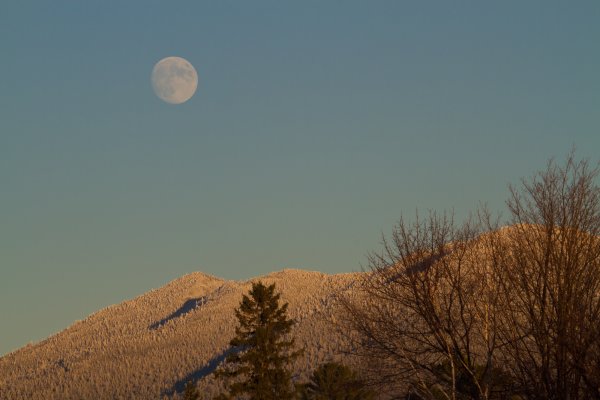

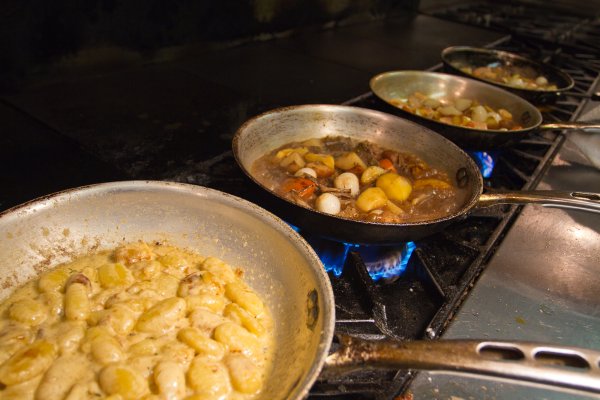
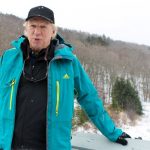

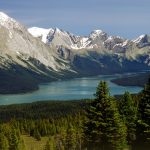
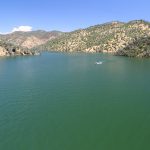
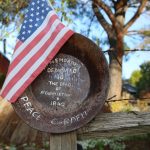
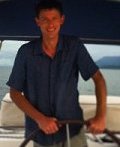
Leave a Reply